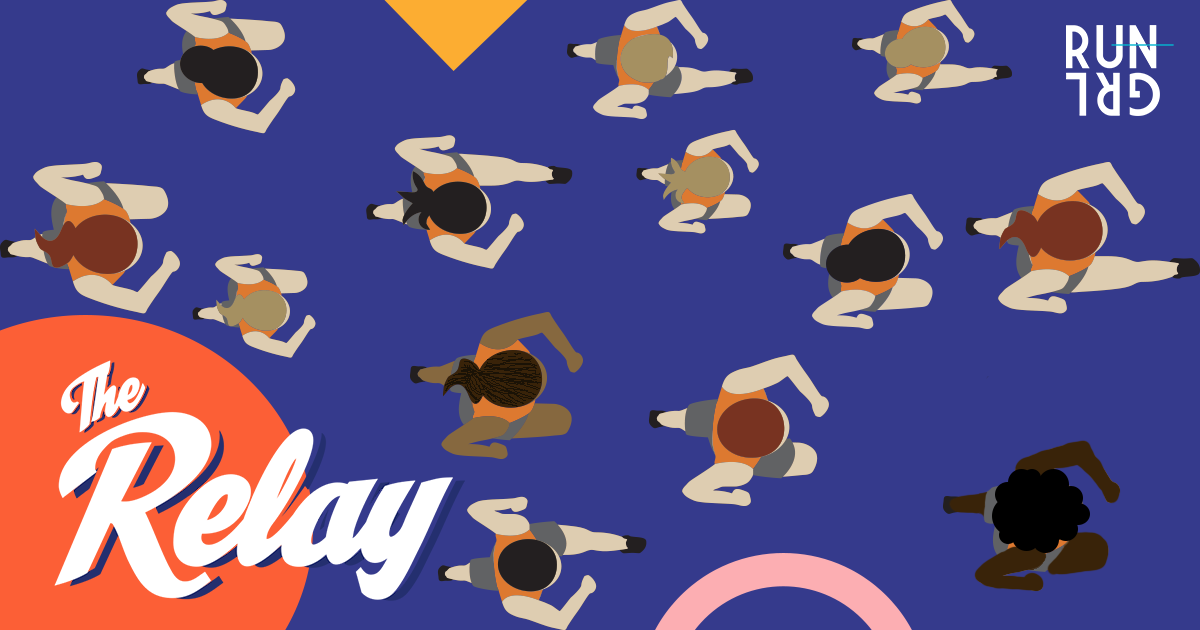Running the Curves: Size and Representation in Running
Photo: Na’Tasha Jones/RUNGRL
by Fallon Jones, Contributor
I’ve always loved that Missy Elliot song, where she says, “I got a cute face, chubby waist, thick legs, in shape, rump-shaking both ways, make you do a double-take!” It’s like my own personal mantra.
At 5’1, I am currently at my heaviest weight of 190 lbs and, because of my size, some tend to think I am not an active or healthy person. But I’m here to speak to the idea that health comes in all shapes and sizes. Acceptance and representation of that truth is something I’ve had to create in order to support my own fitness journey.
Throughout my life, I played sports with girls who did not look like me. As an athlete, I did not see anyone around me with my same body type. Both in competitive cheerleading and as a Division 1 collegiate softball player, there was no representation around to reinforce the idea that my body type might be “acceptable” in the athletic world.
While Missy and I have been rocking the “thick legs, in shape” body type for a while now, it’s only been in recent years that it seems society and the media have begun to embrace the idea that being “thick” is okay, too.
Seeing Myself in Sports
“[Serena] showed me that being a different size is not only okay, but that it can be the size of a champion.”
The first time that I felt seen in the media as it pertains to body type was watching Serena Williams at the 2018 French Open. Her black Nike catsuit enhanced her athletic and very curvy physique as a then-new mother and caused an international sensation. For me, and young girls and women like me, it was so important to see Serena on display on an international stage as someone who could confidently accept her body and her curves. It showed me that being a different size is not only okay but that it can be the size of a champion. Serena trained in a way that enhanced her unique physique to make her a more powerful tennis player.
Serena Williams in her life-saving and conversation-starting Nike catsuit at the 2018 French Open in Paris. Photo: Dana Gardner / Shutterstock.com
Still, not everyone was as enamored with her look and her confidence as I was. Despite the life-saving blood circulation technology of the catsuit that aided her in preventing troublesome blood clots, and despite Serena’s history as a three-time winner of the tournament, the body-enhancing catsuit was later banned by the French Open. French Tennis Federation President Bernard Giudicelli claimed this outfit of hers had “gone too far”. Here she was crushing her sport on the world’s stage, and they were concerned about her outfit.
At that moment, I identified so much with Serena, who’d faced criticism throughout her career for not looking like the women who’ve traditionally played tennis at her level, constantly having her hair, body and fashion choices scrutinized.
Finding workout gear for curvy athletes can be a challenge, says runner and former collegiate athlete Fallon Jones. Photo: Fallon Jones
Fortunately, I think that time has allowed for more representation of women with larger shapes in the athletic world and opened the door for many brands to consider showcasing women of all shapes and sizes.
I first noticed the mainstream fitness media embracing curvy body types when Nike revealed its more inclusive mannequins. I was elated to see that Nike had representation of body images that may not be considered “the norm”, and that they wanted to cater to my fitness needs, too.
Something as simple as having a visual reference of how this clothing brand might fit on me, made me happy.
This move by Nike--and the subsequent flurry of think pieces on whether or not you can be plus-sized and still be healthy--helped showcase the need to create more space for all body types in the wellness community.
The Labels We Give Ourselves
Despite having long been self-conscious about weight and body image as an athlete, running has opened a new door for me in my fitness journey I never would have previously imagined. When I tell people that I’ve completed two half marathons and hope to one day complete a full marathon, I often get strange looks. But while I may not fit what’s considered the standard “look” of an athlete, there’s no denying that I’m out here getting these miles.
I know what’s most important is remembering I don’t need to look a certain way to get out there. I take that energy to create more steps forward, hoping to inspire more women with sizes and shapes like mine to keep going and test their limits in this running game.
Being fit and active doesn’t have to be tied to being thin; it’s perfectly okay to be happy with your curves and represent runners of all sizes.
Follow Fallon’s running journey on Instagram.
Fallon is an aspiring adult wellness practitioner and soon-to-be-marathoner. She serves as a school administrator (Specialist) helping leadership, staff, students and families cultivate a safe and positive educational environment. She is also an adjunct professor at Howard University and volunteers at Uniformed Services University (USI) assisting medical students in reflective practice groups. Fallon enjoys being outside, getting in some miles and fellowshipping with friends.










